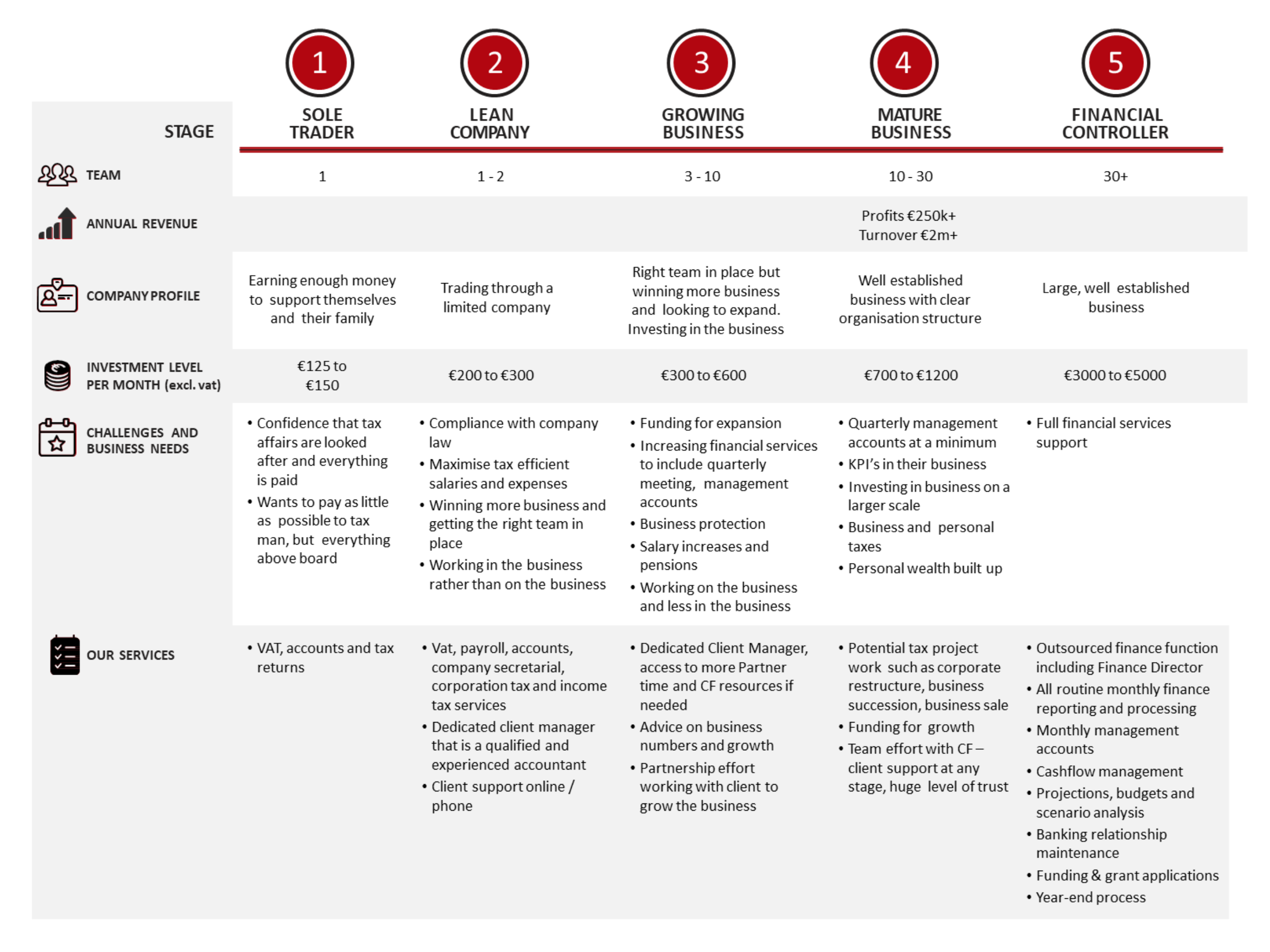Backdating a pension contribution means paying it this year but claiming it last year. I’ll look at how much you can put in, what tax relief you’ll get, and the important timelines. Plus a few other tips along the way. Let’s look at
- Why a Pension
- How much can you put in
- Tax relief
- Timelines
- Other tips
Why a Pension
Pensions are a no-brainer. Tax relief on the payment. Tax-free growth. Tax-free lump sum at drawdown. You pay tax on the income. And there will be no tax on a transfer to your spouse when you depart this life.
But the main thing is that you are providing for a more comfortable retirement. The current state pension is about €300 a week. Not to be sniffed at, but you won’t be going wild with it either. Enough money to get by. Just about, assuming you’re mortgage-free and have no other loans. If you’ve worked hard all your life, it would be super to be comfortable in retirement. Have enough for a few holidays and an odd fancy dinner now and again.
Tax relief for a payment
You get tax relief for a payment. I’m assuming you pay tax at 40%. For every €100 you put into your pension, the cost to you is €60. When investing that €100 into your pension, you are doing two things. Firstly, you are saving for your retirement, and secondly, you are saving tax.
Tax-free growth
Your pension benefits from tax-free growth. There’s no tax within a pension. No Income Tax and no Capital Gains Tax. Imagine if you own Nvidia shares that cost you €1,000 and are now worth €100,000. If you sell them, there’s a gain of €99,000. CGT at 33% is €32,670. But if those shares are in a pension fund, there’s no CGT and the €100,000 is all yours.
Those same Nvidia shares pay you a dividend of €3,000. You pay 50% tax on that income, so half goes to Revenue. In a pension, you keep the full €3,000.
Tax-free lump sum
You can get 25% of the value of your pension fund as a tax-free lump sum at drawdown. That is subject to a cap of €200,000. A pension pot of €600,000 would give you a tax-free lump sum of €150,000. The balance of your pension fund of €450,000 can give you an income.
| €450,000 X 4% | €18,000 |
| €450,000 x 5% | €22,500 |
That income is liable to tax, and the tax you pay on it will depend on your other income.
Transfer to spouse
When you die, you can transfer your pension asset tax-free to your spouse. There’s no inheritance tax on the transfer to a spouse.
How much can you put in?
How much you can put in depends on two things. Your earnings and your age. Your earnings is income you earn from a trade, a profession, or employment. The older you are, the more you can put in. Someone under 30 can put in 15% of their earnings, while someone who is 60 or over can put in 40%.
| Age | Percentage Limit |
| Under 30 | 15% |
| 30 – 39 | 20% |
| 40 – 49 | 25% |
| 50- 54 | 30% |
| 55 – 59 | 35% |
| 60 or over | 40% |
An employee, who is 35, earning €60,000, can get tax relief on pension contributions of up to €12,000 a year. When that employee with the same salary is 40, the tax relief on pension contributions goes to €15,000 a year.
Earnings Cap
There is an earnings cap of €115,000. If your earnings are more than €115,000, the cap applies. Silas is a dentist, and his profit was €150,000 in 2024. He is 45 years old. The earnings cap will apply to him, so the most he can get tax relief on for 2024 is
| €115,000 X 25% | €28,750 |
Silas can put more than €28,750 into his pension, but he’ll get tax relief on €28,750 in 2024. Say he puts in €40,000 in October 2025. He can get tax relief of €28,750 in 2024, and he can claim the balance of €11,250 in 2025.
Tax Relief
You get tax relief by backdating a pension contribution made in 2025 into 2024. This will either save you tax at 40% or 20%. Silas set up a pension in January and pays €1,000 a month on the 10th of each month. By the 10th of November 2025, he will have contributed €11,000 to his pension fund.
Silas meets Bridget, his accountant, in October 2025. She informs him that his tax liability for 2024 is €50,000, but he has already paid €40,000 preliminary tax, so he owes €10,000. She hasn’t included the €11,000 pension payments made in 2025. As we know, the most he can get tax relief on is €28,750. If Silas pays another €17,750 before the tax return deadline, he will max out his contributions for 2024.
| Amount paid monthly to November 25 | €11,000 |
| Top-up payment | €17,750 |
| Total | €28,750 |
| Tax relief at 40% | €11,500 |
Revised Tax Liability
After getting the tax relief, Silas’ tax liability for 2024 is now €38,500.
| Tax liability before pension | €50,000 |
| Tax relief on pension | (€11,500) |
| Revised tax liability | €38,500 |
| Less Preliminary tax paid | (€40,000) |
| Refund due | (€1,500) |
Preliminary Tax 2025
Preliminary tax for 2025 is due by the 31st of October 2025, or the 19th of November 2025, if paying and filing through ROS. The main rules to meet your preliminary tax obligation is to pay either
- 100% of your prior year liability or
- 90% of your current year’s liability
Bridget will do Silas’ accounts for 2025 in the summer of 2026, so she won’t know his 2025 liability until then. Without a pension, his tax payments for 2024 and 2025 would be
| Final Tax liability | €50,000 |
| Less Prelim Tax paid | (€40,000) |
| Balance Due | €10,000 |
| Prelim Tax 2025 – 100% of 2024 | €50,000 |
| Total tax payments | €60,000 |
By claiming the tax relief in 2025 for the 2025 pension payments, Silas reduces his 2024 liability to €38,500.
| Final tax liability | €38,500 |
| Less Preliminary Tax paid | (€40,000) |
| Refund due for 2024 | (€1,500) |
| Prelim Tax due 2025 – 100% of 2024 | €38,500 |
| Total tax payments | €37,000 |
Cash position
Claiming the pension payments of €28,750 in 2024 has saved cash of €23,000. For a cost of €5,750, Silas has put €28,750 into his pension.
| Tax relief in 2024 | €11,500 |
| Reduction in 2025 preliminary tax payment | €11,500 |
| Total cash saving | €23,000 |
Timelines
To meet the timelines here, there are three things you need to get right as follows
- Pay the pension contribution before the tax return deadline
- Claim the pension contribution on your tax return and
- File your tax return on time
If filing and paying on ROS, you have until the 19th of November. If funds are a bit tight, and you are filing only on ROS, then you are aiming for the 31st of October. Most taxpayers will be on the 19th of November. The pension certificate you get from your life company must be dated before or on the 19th of November. Revenue can look for this certificate.
You miss the deadline, and Revenue will disallow the tax relief in 2024. All is not lost, though, as you will get the tax relief in the current year. But you’ll be stuck with the higher liability in the previous year. Plus, the extra preliminary tax payment for the current year.
A few cases have gone before the Tax Appeals Commission where people didn’t claim it on time or filed the return late. The usual excuses. The accountant was useless. The nice Revenue lady said there wouldn’t be an issue. Rover, the dog, ate my tax return, and the cyber-attack from the Russians meant the laptop didn’t work! Excuses won’t wash. Once you do the three things, you’ll get your tax relief.
Tips
Some tips for you to think about. We often see some well-paid company executives ploughing money into their pensions. They will have excellent company pensions but are putting in AVCs to boost them further. The most a married couple can earn at the lower rate of 20% is €88,000. Of that amount the most the higher income-earning spouse can earn at the lower rate is €53,000. The leaves a balance of €35,000 for the other spouse.
Bill works for Roving Eye Ltd and his estimated annual pension at 65 is €70,000 a year. If he keeps putting more AVCs into his pension, he will save tax at 40%. But he will pay tax at 40% on the extra income he gets from that pension. Bill’s wife Patricia has a good job but will have a much smaller pension of €15,000 a year. It could make sense to focus on increasing the AVCs to her pension. If they could grow her pension to €20,000 a year at retirement, the extra €5,000 would be taxed at 20% in her hands. But Bill would pay tax at 40% on his extra income.
Employees can also benefit from backdating a pension contribution. An employee not within the self-assessment system should aim to pay it and claim the tax relief before the 31st of October. Company Directors, who own 15% or more of their company, can avail of the 19th of November. That’s on the basis that they are paying and filing through ROS.
We’ll keep you and your business tax-efficient. If interested, start here


